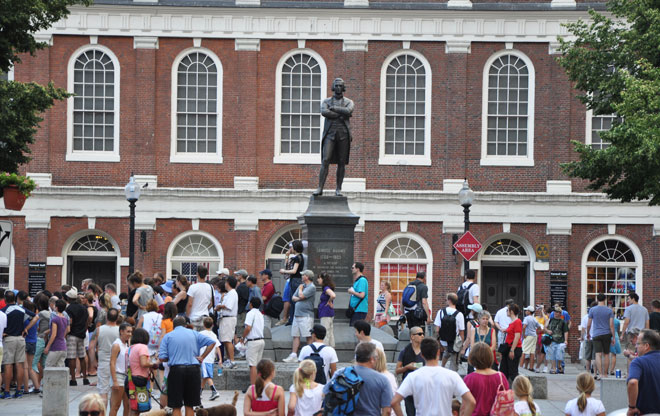
A Historic Meeting Place
At the entrance to historic Faneuil Hall, the watchful gaze of Samuel Adams casts over visitors below. The statue was completed in 1876 by local sculptor and poet Anne Whitney. This site has been the backdrop for a number of important speeches, some by Adams himself. In our time, the granite plaza hosts not only political assembly, but crowds of the hundreds who stop to watch street performers.
Image: Susannah Ross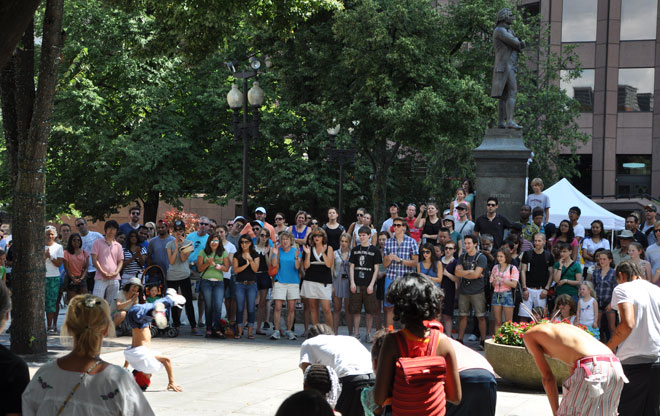
Break Dancers Trump Adams for the Moment
Though Adams is often the center of attention—the focal point of countless tourist photos—on a nice summer day he is trumped, for the moment, by a band of break-dancers. The juxtaposition of the old and the new helps drive home the idea that hundreds of years of urban life have played out on this durable granite stage.
Image: Susannah Ross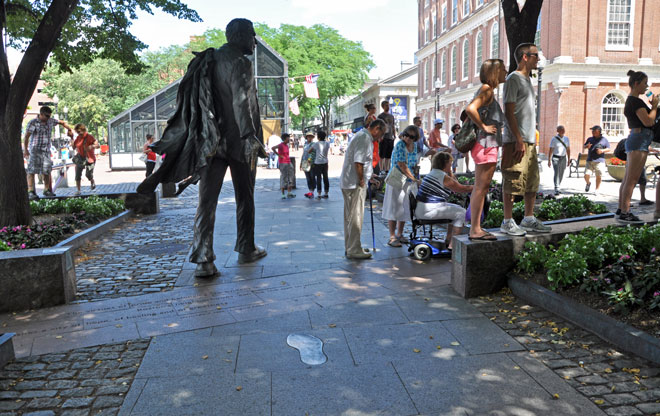
Mayor Kevin White
A larger-than-life statue of Mayor Kevin White, beloved by Bostonians for his 16-years of service from 1968 to 1984, takes a confident stride through the crowd gathered around him. Layers of Boston history come together as his bronze footprint and inaugural quotes etched in smooth pink granite intersects historic wharf cobblestones. Planters framed by bands of granite seat-wall provide a shady seat or a leg-up for watching performances.
Image: Susannah Ross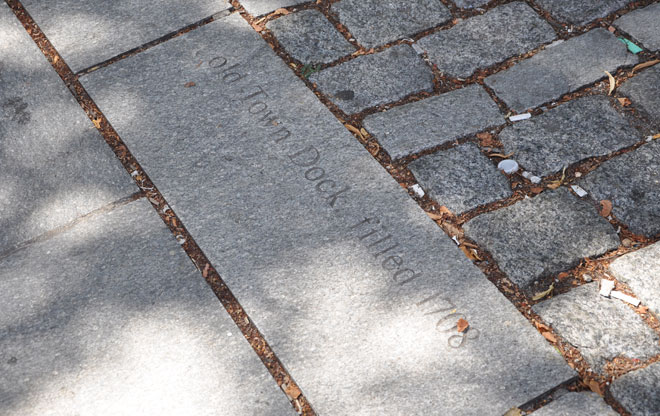
History Etched in the Landscape
Visitors paying attention to the ground can get a tangible education in the history of Boston’s waterfront, as the plaza marks out actual locations of the shoreline over time. The mapping of history on the plaza is a subtle but powerful element of the landscape that brings history alive via a sense of discovery.
Image: Susannah Ross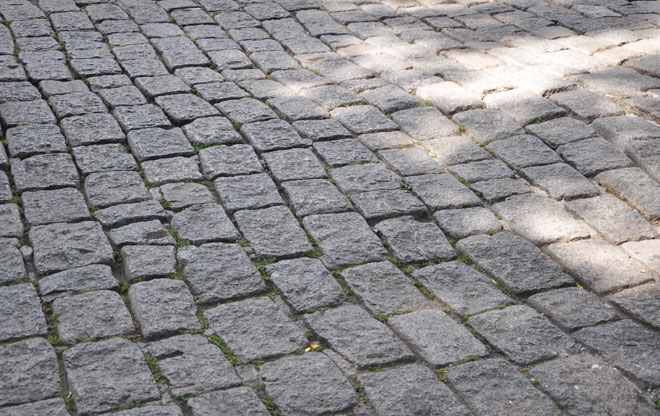
Subtle Hills and Valleys
The landscape doesn’t always need words to describe its history—the settling of granite cobbles over time creates a texture of gently waving joints and subtle hills and valleys. Visitors may not stop to think about it, but the contrast of this surface with the taut, crisp lines of modern-day paving supported by concrete sub slabs drives home the historic nature of this place.
Image: Susannah Ross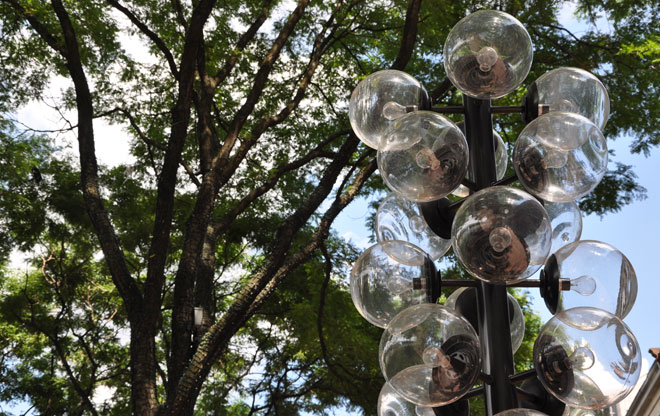
Contrasting Textures and Times
Contrasting textures and times abound in Faneuil Hall. Here the glassy bubble light fixtures remind us of the trends and styles that were current when the Marketplace first opened as a shopping center in the 1970s, and the towering Honey Locusts give a sense of just how much time has passed since then.
Image: Susannah Ross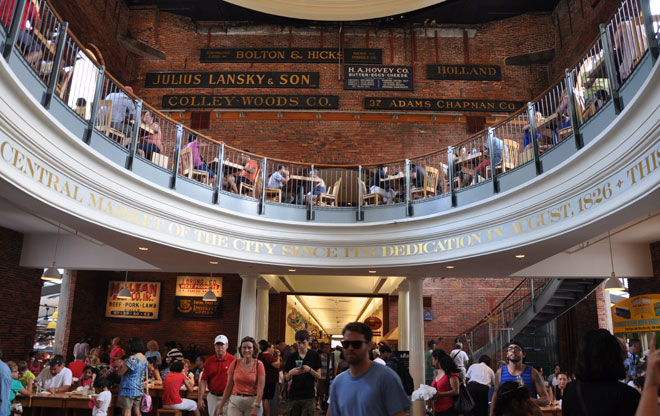
Quincy Market
Quincy Market, the central of the three historic buildings that form the Marketplace, may be passed through at regular intervals along its length, or else visitors can simply walk the full length of its hallway lined with food vendors. Either way, the shopping and dining experience flows seamlessly from indoors to out, landscape and the architecture coming together to form a unique and memorable experience.
Image: Susannah Ross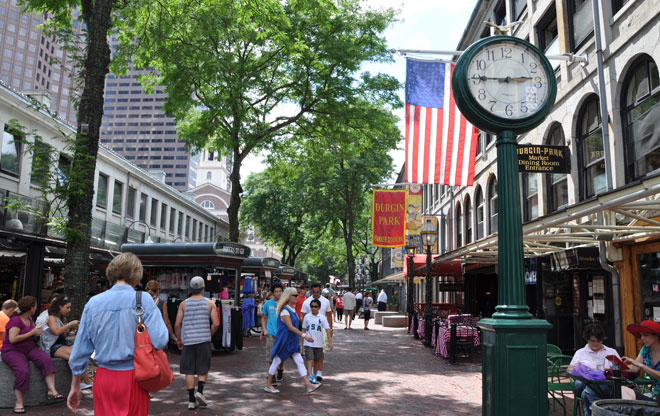
A Landscape for Movement and Commerce
A simple landscape palette of brick paving, shade-giving tree canopies and occasional site furnishings like this clock are all that is needed to create the setting for the life of the marketplace. Paving from the face of one building to the other creates the durable surface upon which café seating spills and mobile vendors wheel their carts. Some landscapes draw visitors in with their soft, green lawns or colorful flower beds, but Faneuil Hall is a landscape that facilitates pedestrian movement and commerce.
Image: Susannah Ross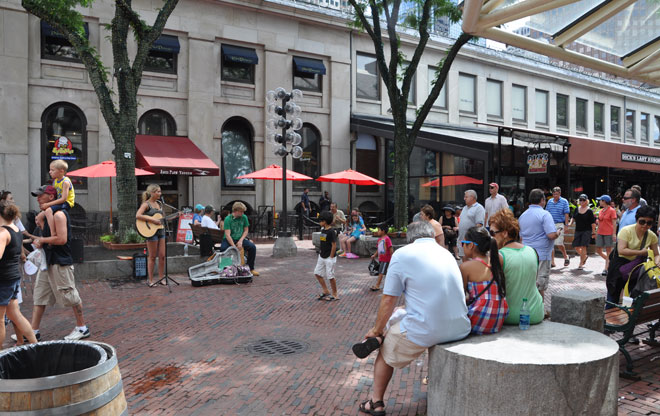
Simple Cylinders and Blocks Offer Seating
Simple cylinders and blocks of granite supplement traditional benches by providing casual seating for groups or individuals, a table on which to put down one’s purchased meal, or a place from which to watch the colorful performers and tourists.
Image: Susannah Ross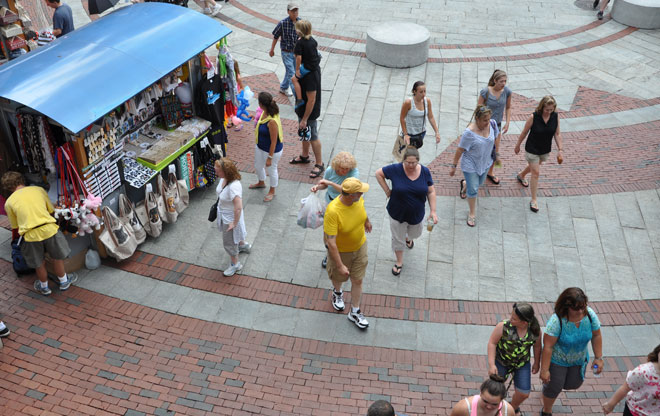
Circular Plaza
At the east end of the marketplace, a circular plaza paved with brick and granite provides a focal point, a location for the annual towering Christmas tree, and a framework for defining and organizing vendor spaces.
Image: Susannah Ross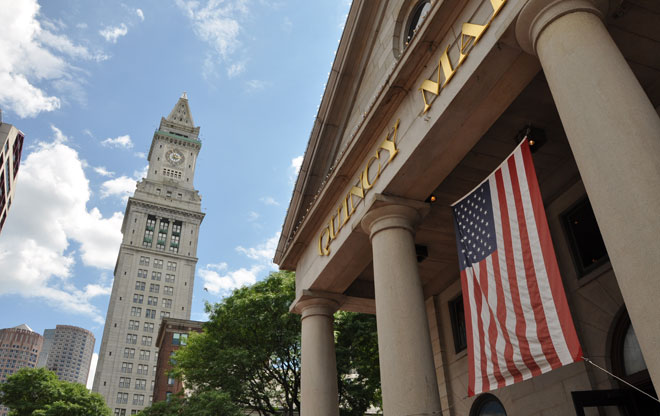
The Custom House Tower
The Custom House Tower looms large over the marketplace and many of the other iconic landscapes in this district, serving as a point of orientation.
Image: Susannah Ross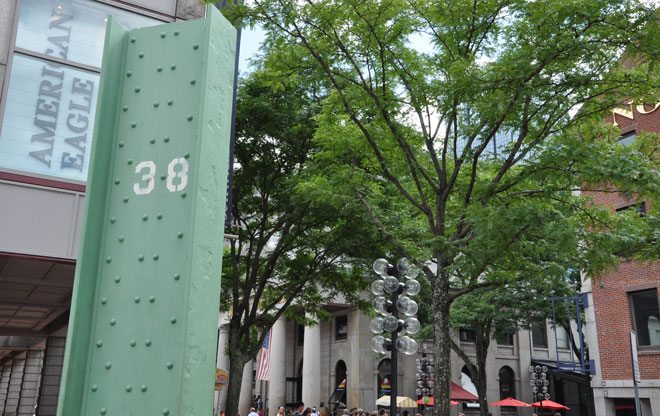
A Remnant
A remnant of Boston’s Central Artery was left in place as a reminder of yet another chapter in Boston’s long history. The scale and proximity of the piece to Faneuil Hall will bewilder visitors who are seeing this space for the first time as it is now—with open, direct physical and visual connections to Boston Harbor.
Image: Susannah Ross